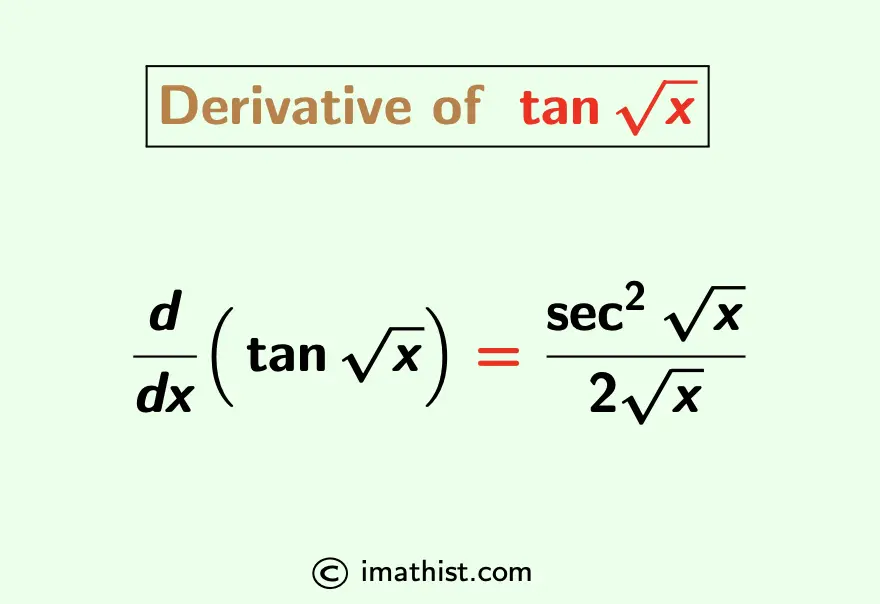The derivative of tan root x is equal to (sec2√x)/2√x. By the chain rule of differentiation, the derivative formula of tan(√x) with respect to x is given as follows:
$\dfrac{d}{dx}(\tan \sqrt{x})=\dfrac{\sec^2 \sqrt{x}}{2\sqrt{x}}$.

Derivative of tan(√x) by Chain Rule
Answer: The derivative of tan√x is (sec2√x)/2√x.
Explanation:
Let us put
z = √x.
Differentiating both sides w.r.t. x, we get that
dz/dx = d/dx(x1/2) = 1/2 x1-1/2 = 1/(2√x) [by the power rule of differentiation].
Now, the given derivative
$\dfrac{d}{dx}(\tan \sqrt{x})$
= $\dfrac{d}{dx}(\tan z)$
= $\dfrac{d}{dz}(\tan z) \times \dfrac{dz}{dx}$, by the chain rule of differentiation.
= $\sec^2 z \times \dfrac{1}{2\sqrt{x}}$ as we have dz/dx = 1/(2√x).
= $\dfrac{\sec^2 \sqrt{x}}{2\sqrt{x}}$, putting back the value of z=√x.
So the derivative of tan root x is equal to (sec2√x)/2√x, and this is proved by the chain rule of differentiation.
Also Read
FAQs
Q1: What is the derivative of tan root x?
Answer: The derivative of tan root x is (sec2√x)/2√x, that is, d/dx (tan√x) = (sec2√x)/2√x.
Q2: If y= tan root x, then find dy/dx.
Answer: If y=tan√x, then dy/dx = (sec2√x)/2√x.